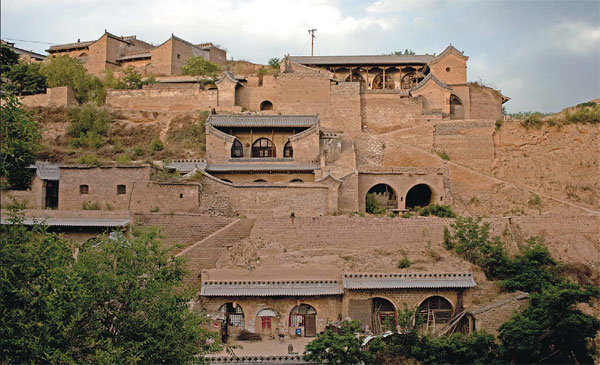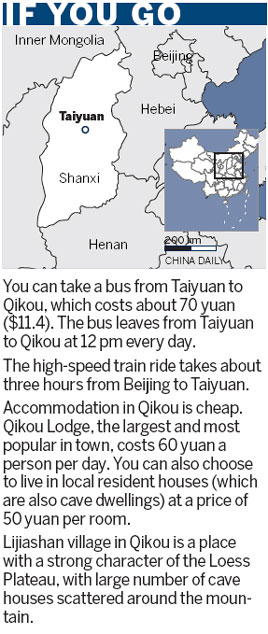 |
|
Most local people live in yaodong, or cave houses, one of the most dominant features of the Loess Plateau along the Yellow River. Photos by Kuang Linhua / China Daily
|
Qikou is a quaint town along the Yellow River. Zhang Yue explores the once vital trading point that is striving to be a tourism spot.
Unlike many travel destinations, Qikou in Shanxi province has never been a place full of color.

The ancient town sits along the Yellow River, about three hours' drive from Taiyuan, the provincial capital. In spite of its proximity to the river, Qikou experiences drought almost all year round.
Home to a population of about 30,000 people, the place is also known as one of the "ancient towns still in existence".
Most local people live in yaodong, or caves, and roads are paved with flagstones.
The history of Qikou dates back to the Neolithic period, and the town was named after its geographic location.
The word "qi" in Chinese literally means rip current of the Yellow River, which is formed by fluctuations in the river. The riverbed can reduce from 400 meters to 80 meters, which causes a sudden rapid currents on the Yellow River and made this stretch of water one of the most challenging places for transportation in ancient times.
The town flourished during the Ming (1368-1644) and Qing (1644-1911) dynasties, as most goods transported using the waterway, had to be transferred onto land, indirectly bringing large numbers of visitors to the town.
It remained a trade center until the 1940s, connecting business from Shanxi, Shaanxi and Inner Mongolia.
Today, the town has lost its former glory, with modern transportation long ago replacing traditional shipping.
Because the town sits along the Yellow River, it is not a good place for plantation.
Since the 1980s, the majority of the young people left Qikou for larger cities to look for work.
Li Xiaobing, a 32-year-old local resident, says many former residents are now migrant workers.
The local government has developed tourism since 1998, aiming to turn the town into a tourist attraction with its long history and the scenic Yellow River. But it was not until 2010 that tourists started visiting.
We recommend:
